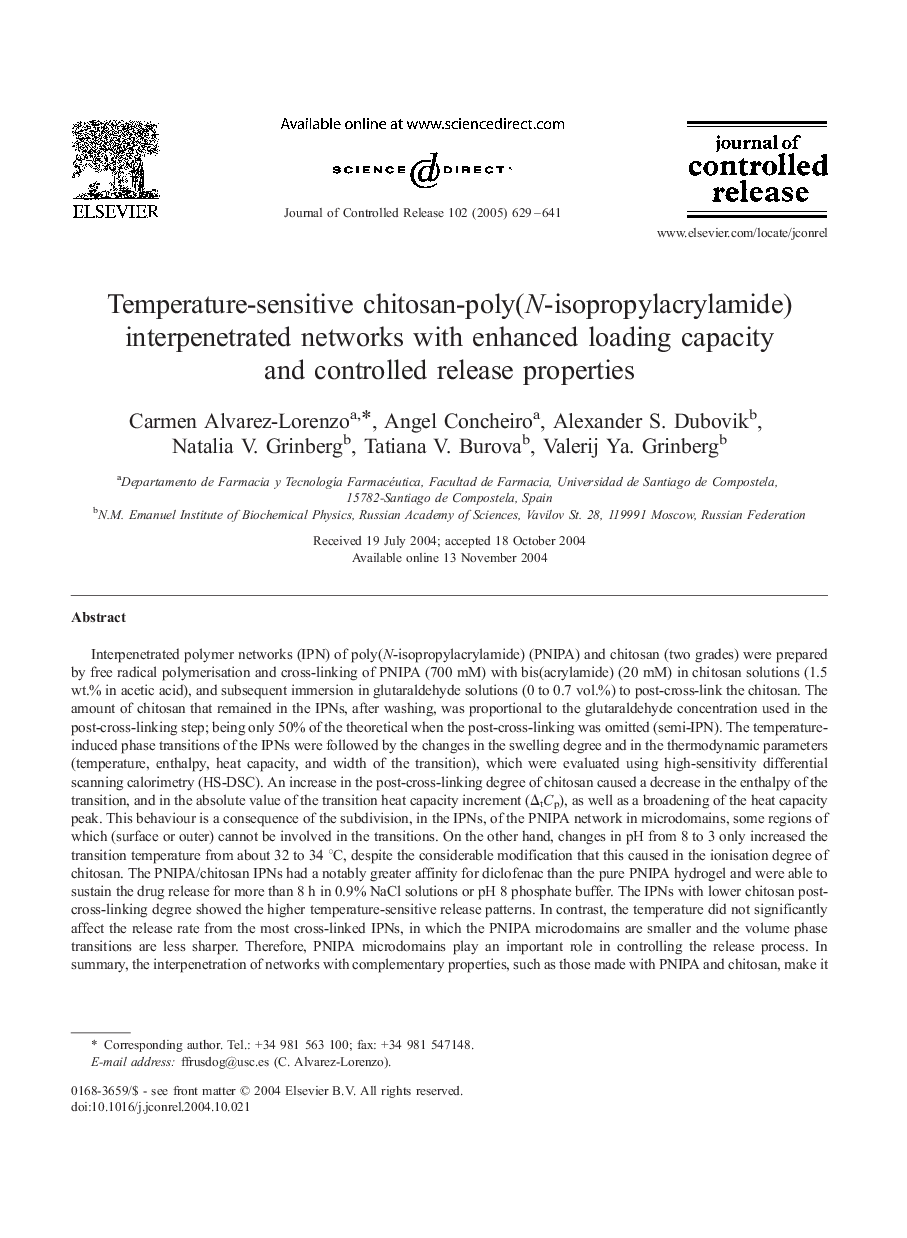| Article ID | Journal | Published Year | Pages | File Type |
|---|---|---|---|---|
| 10613454 | Journal of Controlled Release | 2005 | 13 Pages |
Abstract
Interpenetrated polymer networks (IPN) of poly(N-isopropylacrylamide) (PNIPA) and chitosan (two grades) were prepared by free radical polymerisation and cross-linking of PNIPA (700 mM) with bis(acrylamide) (20 mM) in chitosan solutions (1.5 wt.% in acetic acid), and subsequent immersion in glutaraldehyde solutions (0 to 0.7 vol.%) to post-cross-link the chitosan. The amount of chitosan that remained in the IPNs, after washing, was proportional to the glutaraldehyde concentration used in the post-cross-linking step; being only 50% of the theoretical when the post-cross-linking was omitted (semi-IPN). The temperature-induced phase transitions of the IPNs were followed by the changes in the swelling degree and in the thermodynamic parameters (temperature, enthalpy, heat capacity, and width of the transition), which were evaluated using high-sensitivity differential scanning calorimetry (HS-DSC). An increase in the post-cross-linking degree of chitosan caused a decrease in the enthalpy of the transition, and in the absolute value of the transition heat capacity increment (ÎtCp), as well as a broadening of the heat capacity peak. This behaviour is a consequence of the subdivision, in the IPNs, of the PNIPA network in microdomains, some regions of which (surface or outer) cannot be involved in the transitions. On the other hand, changes in pH from 8 to 3 only increased the transition temperature from about 32 to 34 °C, despite the considerable modification that this caused in the ionisation degree of chitosan. The PNIPA/chitosan IPNs had a notably greater affinity for diclofenac than the pure PNIPA hydrogel and were able to sustain the drug release for more than 8 h in 0.9% NaCl solutions or pH 8 phosphate buffer. The IPNs with lower chitosan post-cross-linking degree showed the higher temperature-sensitive release patterns. In contrast, the temperature did not significantly affect the release rate from the most cross-linked IPNs, in which the PNIPA microdomains are smaller and the volume phase transitions are less sharper. Therefore, PNIPA microdomains play an important role in controlling the release process. In summary, the interpenetration of networks with complementary properties, such as those made with PNIPA and chitosan, make it possible to develop drug delivery systems with improved drug loading capacity (owing to chitosan) and sustained release behaviour (owing to PNIPA).
Related Topics
Physical Sciences and Engineering
Materials Science
Biomaterials
Authors
Carmen Alvarez-Lorenzo, Angel Concheiro, Alexander S. Dubovik, Natalia V. Grinberg, Tatiana V. Burova, Valerij Ya. Grinberg,
